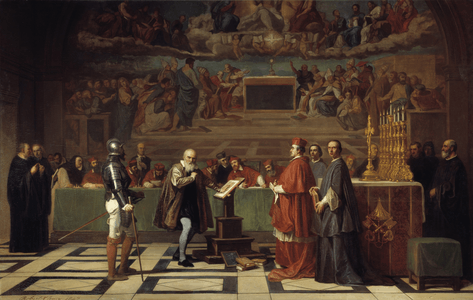Joseph-Nicolas Robert-Fleury
Joseph-Nicolas Robert-Fleury (8 August 1797 – 5 May 1890) was a French painter.
Joseph-Nicolas Robert-Fleury | |
|---|---|
 Joseph-Nicolas Robert-Fleury by Gaston Thys | |
| Born | 8 August 1797 |
| Died | 5 May 1890 (aged 92) |
| Known for | Painting |
Biography
Born in Cologne, he was sent by his family to Paris, and after travelling in Italy returned to France and made his first appearance at the Salon in 1824; his reputation, however, was not established until three years later, when he exhibited Tasso at the Convent of Saint Onophrius.
Endowed with a vigorous original talent, and with a vivid imagination, especially for the tragic incidents of history, he soon rose to fame, and in 1850 succeeded François Granet as member of the Académie des Beaux-Arts. In 1855, he was appointed professor and in 1863 director of the École des Beaux-Arts, and in the following year he went to Rome as director of the French Academy in that city.
His pupils included Marie-Adélaïde Baubry-Vaillant, David Bles, Marguerite Jacquelin, Charles Désiré Hué, Leon Kapliński and Henri Le Riche.[1] His son, Tony Robert-Fleury, was also a painter.
Honours
1887: Knight in the Order of Leopold. [2]
Selected paintings
 Henry IV, After his Assassination
Henry IV, After his Assassination Galileo before the Holy Office
Galileo before the Holy Office Looting of a house in Giudecca
Looting of a house in Giudecca Scene from the St. Bartholomew's Day massacre
Scene from the St. Bartholomew's Day massacre
References
- Joseph-Nicolas Robert-Fleury in the RKD
- Handelsblad (Het) 17-02-1887

External links
